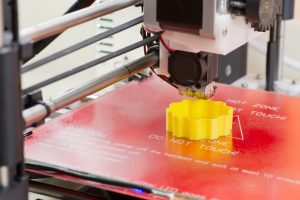I recently encountered an example of 3D printing making a dramatic difference for a manufacturing company, but not in the way you might expect. I have often said that 3D printing “…is not the future of high volume consumer product manufacturing, at least not with today’s technology,” and I still hold that opinion. But here is an example of a high volume manufacturer using 3D printing to ‘change the game’ in a very significant way.
This company makes a type of electrical connector that contains some molded plastic parts. Since these products and the plastic parts are unique, the company must design and acquire custom molds for each plastic part or else buy the parts from a plastic molding company, an alternative that does not fit in their business strategy for a number of reasons that are not important to this story. Each customer product, therefore, requires mold-making before the product can be manufactured. And that can be the determining factor on whether the company will even bid for the business.
A single set of molds for one customer product can cost tens of thousands of dollars. If the unit value of the component is only pennies, it takes a huge volume of product to justify the cost of the molds. As a consequence, the company does not even consider responding to requests for quotes for orders of less than many thousands of a particular product. Lead time on mold production can also be a limiting factor in the company’s decision to ‘no bid’ an otherwise reasonable opportunity.
Enter 3D printing. Now that 3D printers are available that can produce metal parts (molds, in this case) of sufficient strength and precision to work in this company’s business, it’s a whole new ball game. In many cases, a new mold can be printed overnight (after the necessary design and specification stage, of course) for just a few hundred dollars, smaller jobs now become realistic and attractively profitable. This company now has a whole new market that was previously unavailable.
Committing to a large job with the traditional mold-making process carries a degree of risk. Not only is the mold-making expensive and time consuming, there is always a possibility that the mold may not be exactly right for the job and may need modification or a redesign before parts can be produced. Procuring a second mold can quickly eat up the profit from a job and also introduce a serious delay in getting the product completed and out to the customer. With 3D printed molds, a new mold can be produced overnight for a few hundred dollars. This capability enables a whole new level of engineering and experimentation that could open new opportunities for this company to innovate and go after new business that was previously out of reach.
The company is currently having their molds 3D printed by the maker of the printer (as a service) to validate the concept and restructure their business before spending upwards of a half-million dollars on their own 3D printer. Nonetheless, they are confident that 3D printing is fundamentally changing their business.
This post original appeared on Navigate the Future, the Dassault Systèmes North America blog.






